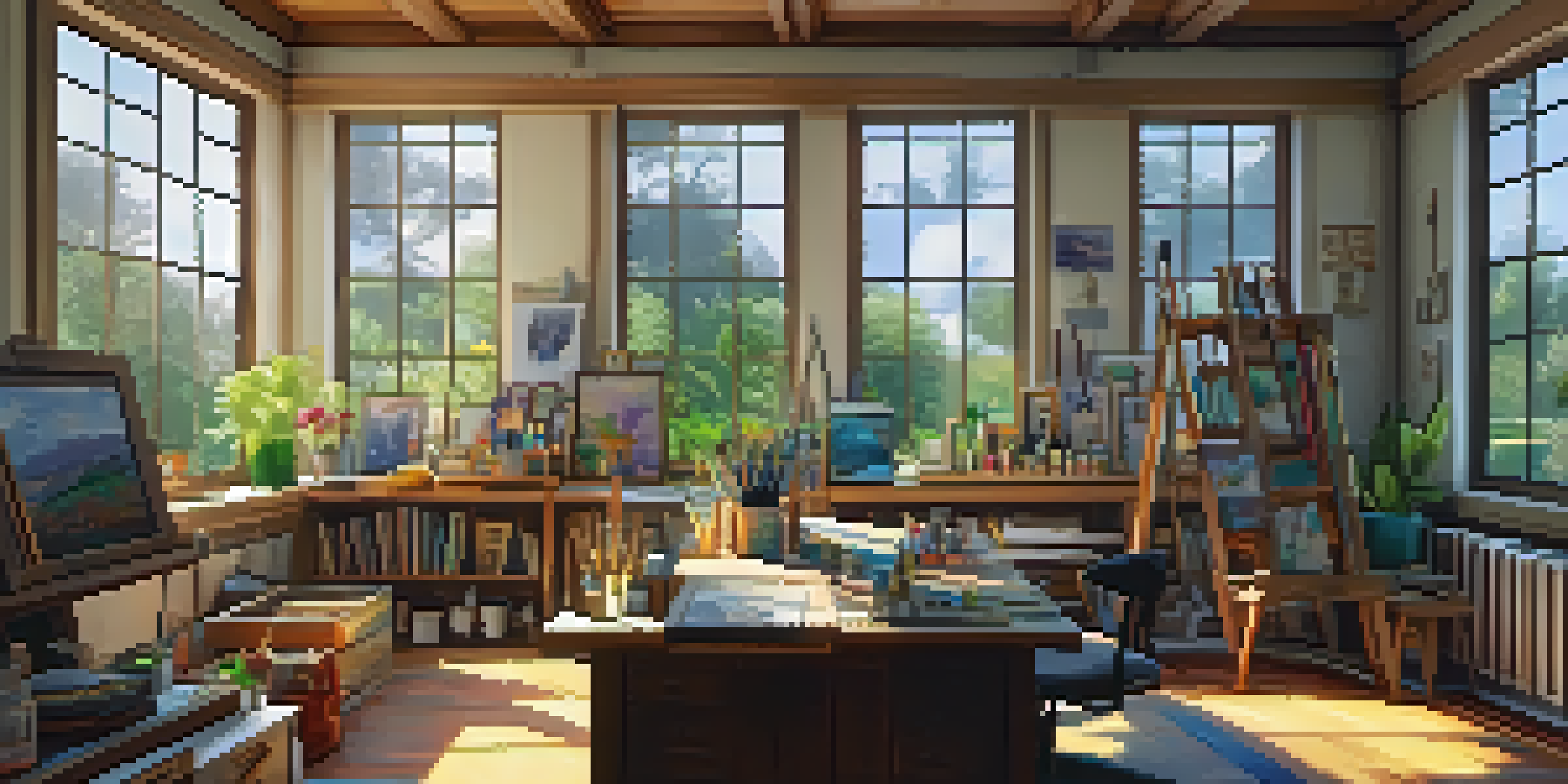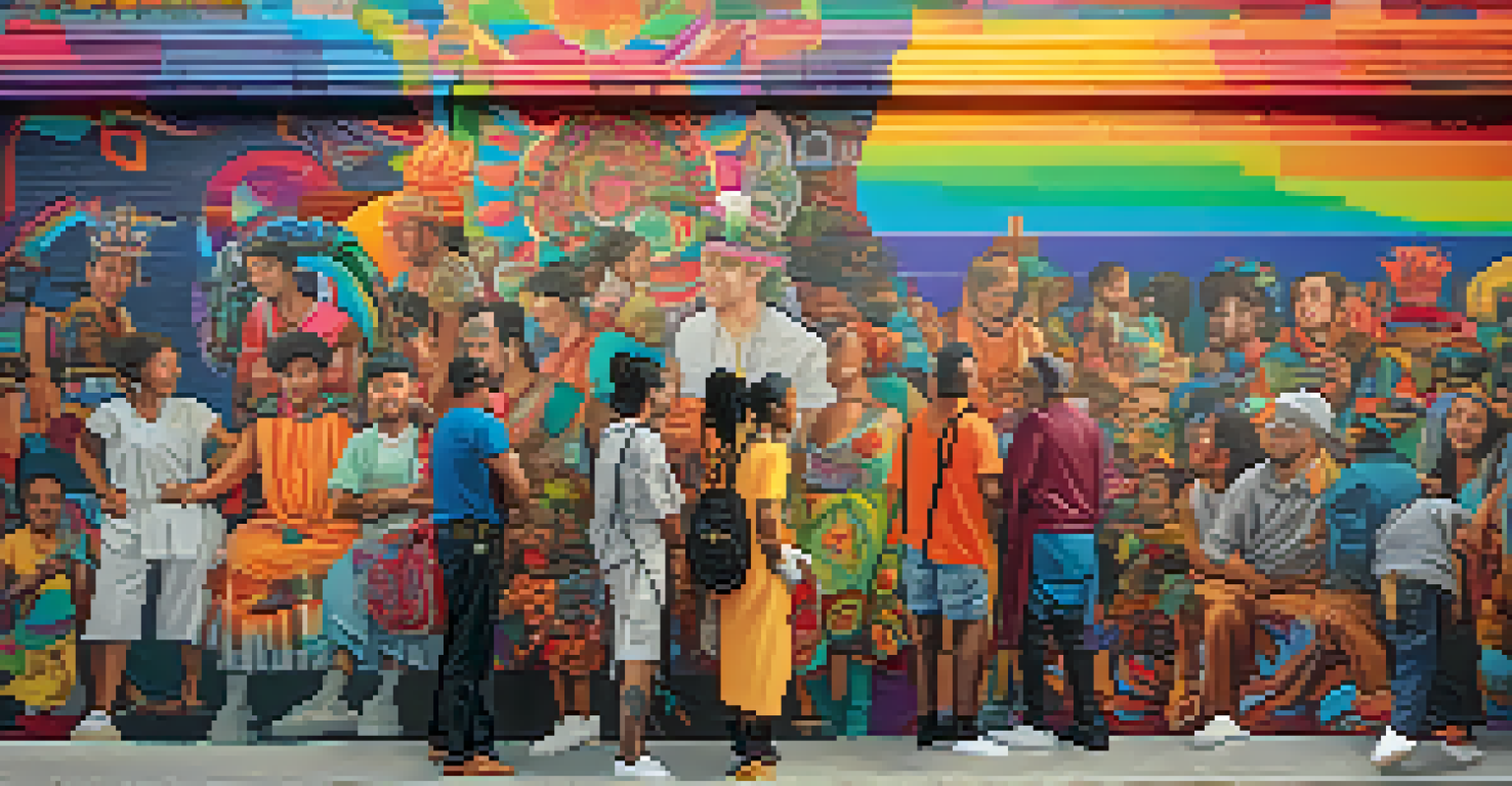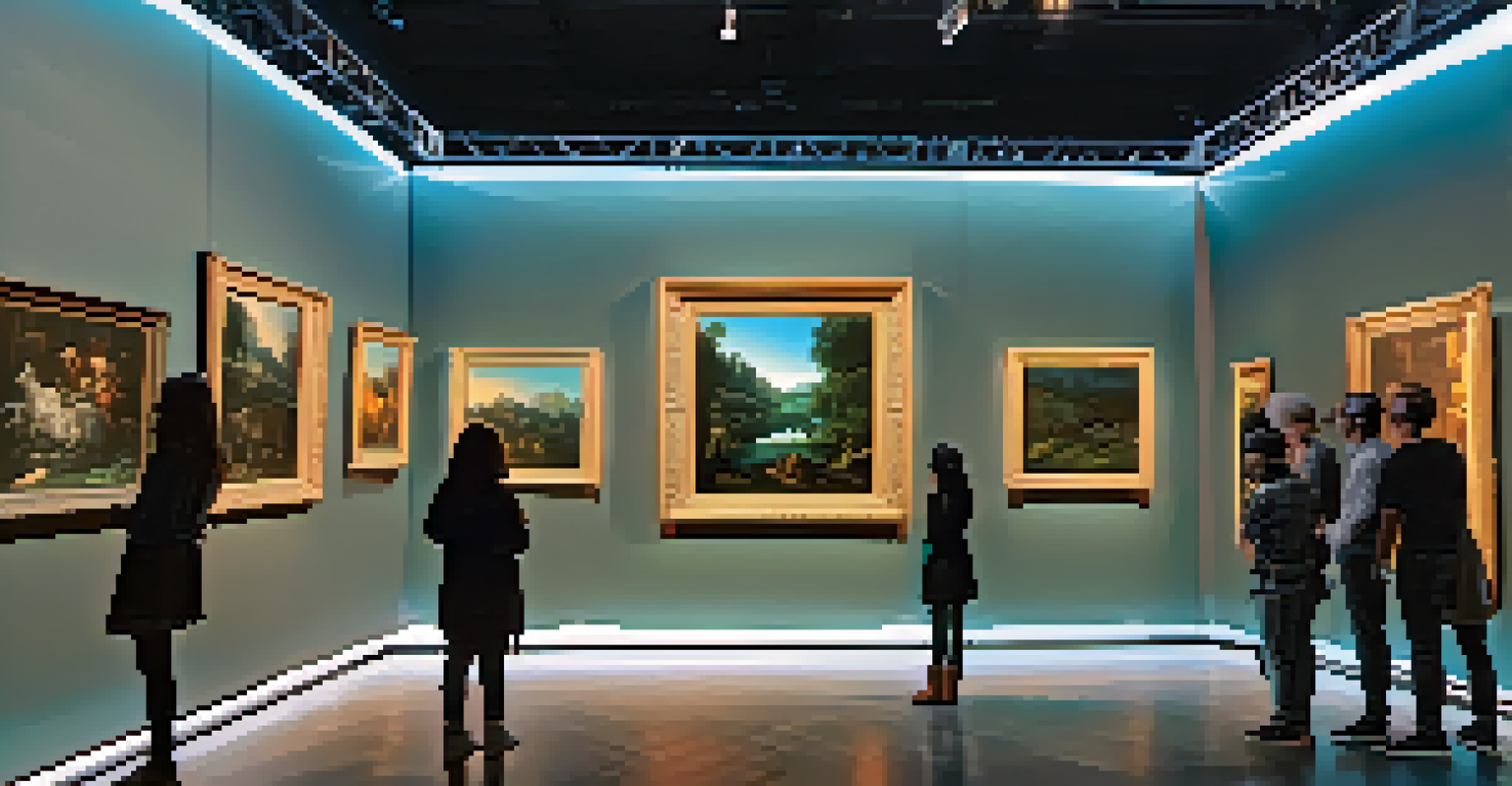The Influence of Technology on Art and Representation

The Evolution of Artistic Tools Through Technology
From the invention of the paintbrush to digital tablets, technology has continually shaped how artists create. Each new tool offers fresh possibilities, allowing for experimentation and innovation. For instance, the transition from oil paints to acrylics revolutionized the speed at which artists could work, opening up new avenues for expression.
Art is the most beautiful of all lies; it is an illusion that helps us see the truth.
Today, digital tools in software like Adobe Photoshop or Procreate allow artists to manipulate their work in ways that were previously unimaginable. These tools have democratized art creation, enabling anyone with a computer to explore their creativity. As a result, we see a broader range of styles and approaches that reflect individual experiences and perspectives.
Moreover, technology doesn't just help create art; it also influences how we perceive it. With the rise of virtual reality (VR) and augmented reality (AR), audiences can engage with art in immersive environments, providing a deeper connection to the work and its themes.
The Role of Social Media in Art Exposure
Social media platforms like Instagram and TikTok have transformed how artists share their work and connect with audiences. Artists can now showcase their creations to a global audience within seconds, breaking geographical barriers that once restricted visibility. This instant connection fosters a sense of community among creators and art lovers alike.

The visual nature of these platforms emphasizes the importance of aesthetics, leading to trends that can catapult lesser-known artists into the limelight. For example, the virality of a single artwork can lead to opportunities for exhibitions, collaborations, and even sales. Artists now have a direct line to feedback, enabling them to evolve their styles based on audience reactions.
Tech Transforms Art Creation
From traditional tools to digital platforms, technology continually reshapes the way artists create and share their work.
However, this exposure comes with challenges, such as the pressure to create content that fits the platform's algorithms. This can lead artists to prioritize quantity over quality, potentially diluting their unique voice. Balancing authenticity with the demands of social media is a delicate dance that many creators navigate.
The Impact of Digital Art on Traditional Art Forms
Digital art has emerged as a legitimate and respected medium, leading to new conversations about what constitutes 'art.' While some traditionalists may argue that digital creations lack the authenticity of hand-drawn pieces, others celebrate the innovation it brings. Digital art often incorporates techniques and styles derived from traditional practices, creating a hybrid form that respects the past while pushing boundaries.
Every artist was first an amateur.
Moreover, the accessibility of digital tools allows emerging artists from diverse backgrounds to find their voices. This inclusivity enriches the art world, introducing fresh perspectives and narratives that might have been overlooked in more conventional settings. As a result, the line between traditional and digital art continues to blur, inviting dialogue on the value of each.
As exhibitions increasingly feature digital works, we must reconsider how we display and engage with art. Formats like NFTs (non-fungible tokens) have introduced new ways to own and sell art, challenging traditional notions of provenance and ownership. This evolution urges us to broaden our understanding of what art can be.
Artificial Intelligence: A New Collaborator in Art
Artificial intelligence (AI) is reshaping the art landscape by acting as a creative partner for artists. AI programs can generate images, music, and even poetry, pushing the boundaries of human creativity. This collaboration raises intriguing questions about authorship and originality—who is the true artist when a machine contributes significantly to the creation process?
Some artists embrace AI as a tool that enhances their creative process, helping them brainstorm ideas or refine their techniques. For example, using AI to analyze patterns in historical art can inspire new works that resonate with contemporary audiences. This synergy can lead to innovative pieces that blend human emotion with machine precision.
Social Media Boosts Artist Exposure
Platforms like Instagram and TikTok allow artists to reach global audiences instantly, fostering community and new opportunities.
However, the rise of AI-generated art also ignites debates about the value of human touch in creativity. As AI continues to evolve, we must reflect on the role of the artist in this new paradigm and how it influences our understanding of creativity.
Augmented Reality: Transforming Art Experiences
Augmented reality (AR) has begun to revolutionize how we experience art, allowing viewers to interact with pieces in new and exciting ways. By overlaying digital information onto the physical world, artists can create immersive experiences that engage audiences beyond traditional viewing methods. For instance, exhibitions that incorporate AR technology can bring static displays to life, adding layers of meaning and context.
This interactive aspect encourages viewers to become active participants in the art experience, fostering a deeper connection to the work. Imagine standing in front of a painting and using your smartphone to reveal hidden details or animations that tell a story. This blend of the digital and physical realms creates a dynamic dialogue between the artwork and its audience.
As AR continues to evolve, it presents opportunities for artists to explore narratives and themes in innovative ways. It challenges the conventional boundaries of art and invites us to rethink how we engage with creative expressions.
Globalization of Art Through Technology
Technology has enabled the globalization of art, allowing diverse cultures to share their traditions and expressions with a worldwide audience. Artists from different backgrounds can now collaborate across borders, blending their unique styles and perspectives. This cross-pollination enriches the art world, resulting in innovative works that reflect a tapestry of influences.
Moreover, online platforms have created avenues for artists to sell their work internationally, reaching collectors and enthusiasts far beyond their local markets. This accessibility helps to democratize the art world, allowing emerging artists to gain visibility and recognition without relying on traditional gatekeepers like galleries.
AI and AR Redefine Art Experience
Emerging technologies like AI and augmented reality challenge traditional notions of art, creating interactive and innovative experiences.
However, this globalization also raises questions about cultural appropriation and the authenticity of representation. As artists draw inspiration from various cultures, it becomes crucial to approach this exchange with respect and understanding, ensuring that the voices and stories of all artists are honored.
The Future of Art in a Tech-Driven World
As technology continues to advance, the future of art is poised for exciting developments that we can only begin to imagine. Artists will likely explore new mediums and techniques that we haven't yet discovered, pushing the boundaries of creativity even further. The integration of technology into art is not just a trend; it's a fundamental shift that will redefine how we create and experience art.
Emerging technologies like blockchain for digital art ownership and further advancements in AI and AR promise to transform artistic expression. Artists will have more tools than ever at their disposal to communicate their visions and connect with audiences. This evolution also presents a challenge: how to maintain the authenticity and emotional resonance of art in a tech-driven landscape.

Ultimately, the interplay between technology and art will shape the stories we tell and the experiences we share. As we look toward the future, it's essential to embrace these changes while staying true to the core values that make art a powerful medium for connection and expression.